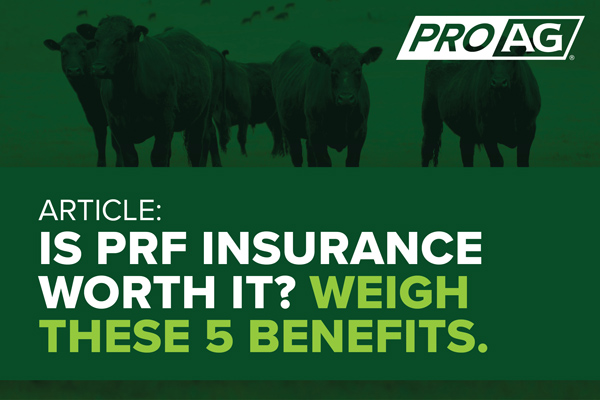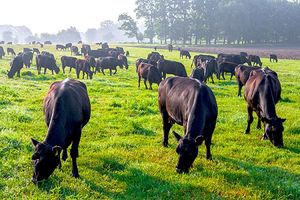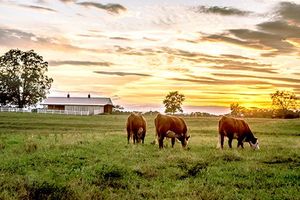Is PRF insurance worth it? Weigh these five benefits.

If you grow forage for grazing or haying, you’ve probably wondered whether Pasture, Rangeland, Forage (PRF) insurance is worth it. We’re here to share five benefits of PRF coverage so you can make the best decision for your operation.
What is PRF insurance?
PRF insurance is a federal area-based program designed to help protect a producer’s operation from forage loss risks due to lack of precipitation on acres grown with the intended use of grazing or haying. Essentially, it’s crop insurance for hay, whether your cattle graze on the acres or you bale your crop. Coverage is based on local rainfall indexes, and producers are not required to insure all their acres.
So, is PRF insurance worth it? These five benefits could help you decide.
1. PRF insurance policies include protection for haying and grazing.
The PRF program was designed primarily for cattle producers who raise feed crops (pasture, alfalfa and other forage crops). The goal is to help producers cover their increased costs for feed, destocking, depopulating or other actions that can be incurred during dry periods.
However, PRF is not drought insurance. It does not insure against abnormally high temperatures or windy conditions. While a drought may cause a decline in the rainfall index value to the point that an indemnity payment is issued to eligible insured producers, a drought being declared in a state, county or area does not automatically trigger an indemnity payment.
2. PRF insurance is a risk management tool.
Weather events can create expensive challenges for cattle producers. PRF insurance acts as a risk management tool that can help producers sustain their cattle when they may otherwise have needed to resort to herd liquidation to make ends meet. Lenders also like to see producers use crop insurance in their overall risk management strategies.
3. Producers don’t file a notice of loss for PRF policies.
The PRF program will issue indemnity payments automatically based on a producer’s chosen grid area rainfall index. These payments are typically sent around four months after the end of the covered index interval. The rainfall index is based on National Oceanic and Atmospheric Administration (NOAA) data collected from local NOAA weather stations.
The program’s location grid system for rainfall data goes off 0.25-degree increments in latitude and longitude — equal to approximately 17 square miles. Each grid’s rainfall index dictates whether conditions justify a PRF indemnity payment. Rainfall data is compared to long-term data for the area — starting in 1948 — to determine whether payments are issued.
 4. PRF insurance coverage options are very customizable.
4. PRF insurance coverage options are very customizable.
Available in two-month periods, PRF policies can include coverage levels from 70% to 90% (increasing in 5% increments). Producers choose their coverage periods to align with times when precipitation is most important to their operations. They also select a productivity factor — between 60% to 150% — to match the protection amount to the value that best represents the productive capacity of the producer’s acres.
5. PRF policies have delayed (and subsidized) premiums.
Policyholders don’t have to pay insurance premiums when they sign up for PRF insurance. They’re billed the following year in September. Plus, the federal government subsidizes more than half of the premium cost.
Why should I choose ProAg for PRF insurance? ProAg has decision support tools to help producers see the full-picture quote.
With ProAg, you’ll find knowledgeable independent agents and the decision support tool you need to make an informed decision on coverage. That includes the myProAg® policyholder portal, which assembles the data variables (including USDA PRF grid information) for coverage levels and timing decisions.
Our quoting tool also houses rainfall index historical data, allowing agents to go back up to 40 years within a grid and print out an accurate quote sheet. That means producers know premiums up-front and can budget for that expense.
Interested in adding PRF coverage? Have more questions?
Contact your local ProAg agent or regional specialist to explore coverage options. Or, download our infographic to see more PRF benefits.


